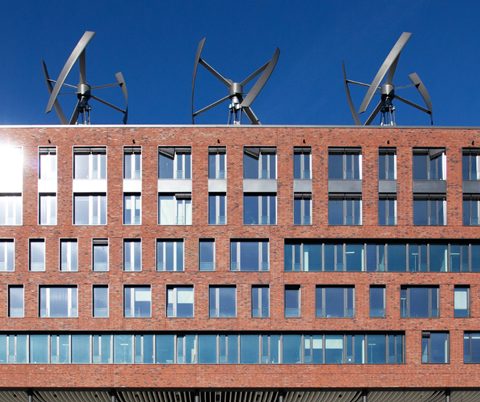In our latest insight, we explore the fire regulation landscape across Europe to understand where fire currently sits on the construction agenda.
Where it began for the UK
Fire regulations in UK construction have evolved since their original introduction following the Great Fire of London in 1666. King Charles II decreed that roads must be widened to prevent the spread of fire and that buildings should be constructed with stone instead of highly flammable materials such as wood, revolutionising the scope and possibilities of building design.
Fast forward to the UK construction industry as we know it today, and building design shapes how our communities look, function, and thrive.
Whilst there has been a significant shift in focus towards new legislation for important topics such as sustainability and environment in construction, UK regulations around fire continue to play a vital role in ensuring that buildings are principally designed for the safety of occupants.
Fire regulations across Europe
Countries across Europe adopt different approaches to fire safety regulations. UK fire regulations are categorised as ‘performance-based’, whereby the specific characteristics of the building are assessed in accordance with engineering principles and mathematical models, under the Regulatory Reform (Fire Safety) Order 2005 or ‘the Fire Safety Order’.
Sweden takes a similar approach to the UK, with the Swedish Building and Design Regulations (BBR 94 and BKR 94) following a performance-based approach. Swedish regulations also consider the proximity of surrounding buildings in the same way as in the UK – Document B stipulates material ratings in relation to boundary conditions/ proximity to other buildings.
Many countries within the European Union, however, follow a more prescriptive-based approach that allows a building to meet a pre-set standard when it comes to fire safety.
Germany operates under the National Model Building Code, which relies on prescriptive rules with additional regulations for specific types of buildings or buildings with specific uses, for example, high rise constructions or buildings used for industrial applications. Germany also has different rules on fire depending on the Federal State.
Some countries have adopted a flexible hybrid approach, such as Italy, who have an older approach of prescription and a newer approach that allows for a more ‘creative’ design, which is similar to the regulations in the UK.
In Denmark, building regulations retain performance-based requirements for complex buildings, but traditional buildings are assessed using prescriptive solutions (varies across different building types).
The building codes in Austria are specified by the governments of the 9 federal states. These building codes are referring to the OIB guidelines of the Austrian Institute of construction engineering. The OIB Guidelines are created as prescriptive fire safety design regulations, but it is also possible to use a performance-based approach if it is demonstrated by comprehensible and conclusive arguments that the required level of safety is achieved.
Beyond Europe in the US, the prescriptive approach is also favoured, with all 50 states following the ‘ICC model codes’. There are advantages and disadvantages to both approaches; a performance-based approach gives design teams increased freedom by emphasising engineering, calculation, and modelling, whereas a prescriptive-approach provides structure with fixed rules to follow and boxes to tick.
Attitudes towards fire regulations
In response to recent fire tragedies, such as the 2017 Grenfell fire in London and the 2010 Shanghai fire where a 28-storey residential building was engulfed in flames, global attitudes towards fire legislation are once again changing.
The Grenfell review, which was published by Dame Judith Hackitt following an investigation into the Grenfell fire in London, concluded that legislation regarding fire safety equipment in UK construction is not fit for purpose and needs to improve.
Several other EU countries have followed suit with a review of construction fire regulations, including Ireland, France, Belgium, The Netherlands, Greece, Denmark, Finland, and Bulgaria, all committing to roll out new initiatives.
In France, high-rise buildings are currently defined as buildings with a height of over 50 meters for residential buildings and 28 meters for other building types. France are now looking to introduce a new ‘medium-height’ of 28-50 metres for residential buildings, which will have additional fire safety requirements not currently in place. Most other countries under review are also looking to ‘plug gaps’ in fire safety in new developments.
Governments are keen to encourage people to meet fire regulations. In Holland, the 2012 Dutch Building Decree (Bouwbesluit) states that fire precautions should be taken in building, and in some cases, you will just need an all-in-one permit for physical aspects (Omgevingsvergunning). This ensures it is simple yet comprehensive.
Consistently evolving
Building regulations are frequently updated with new amendments as technology advances and attitudes towards safety adapt.
In Ireland, the amendment to building regulations in 2017 impacted a range of standards including ensuring adequate means of escape, how to prevent the spread of fire both internally and externally, and access for the emergency services.
Switzerland also updates building regulations regularly (every 10 years), to ensure that legislations are state of the art, albeit in the same format.
Over the past decades, Europe has achieved substantial improvements in fire safety thanks to the continuous adjustment and implementation of fire safety strategies. As a result of comprehensive approaches, the Modern Building Alliance report that fire fatalities have fallen by 65% in Europe over the last 30 years. However, more needs to be done as fire safety in buildings remains a major societal issue. According to recent statistics, it is estimated that around 5,000 people a year are killed due to building fires in Europe.
Fire resistant materials at Farrat
Recognising the need for more accessible fire-rated construction materials, Farrat developed and released the markets first A2 fire-rated Structural Thermal Break – Farrat TBF – in 2019.
Extensively researched and tested by both BRE (Building Research Establishment) and Warrington Fire, Farrat TBF is specifically engineered for use in structural steel connections and can maintain structural performance at temperatures more than 1000°C. Providing both superior structural and thermal performance to solve structural thermal bridge issues, whilst exceeding all current fire regulatory requirements for buildings above and below 18m.
Exceeding expectations
Farrat are on a mission to encourage building designers around the world to exceed regulations when it comes to fire safety in construction.
Exceeding regulation expectations ensures that buildings are safe, robust and fit-for-purpose for the lifetime of the building.
There is less chance of needing to retrospectively change materials, as buildings will have been designed and constructed as future-proof, and the building will be capable of meeting evolving levels of safety in an ever-changing environmental climate.
#onamission






